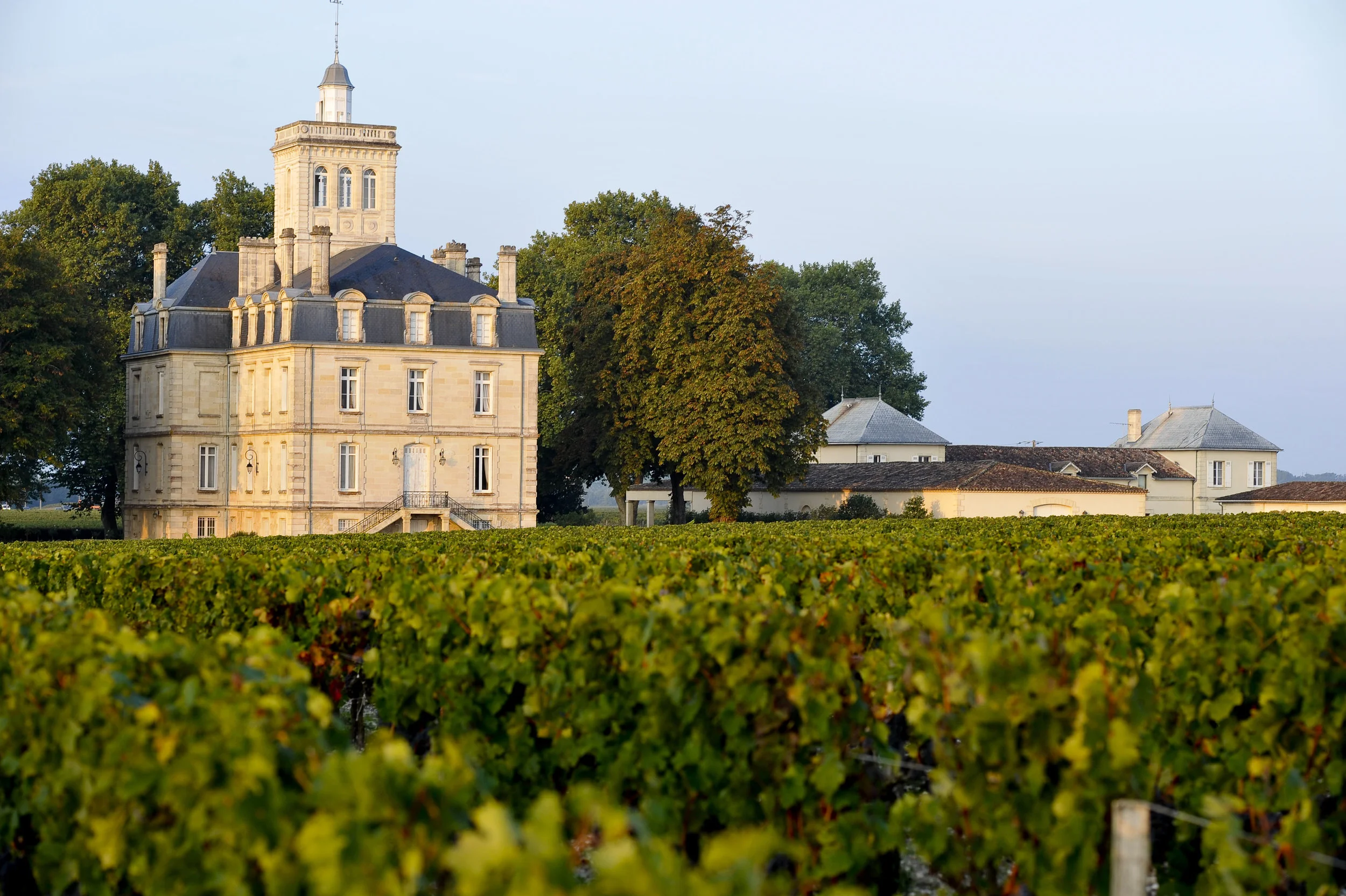HISTORY
CREATION IN 1719
The origins of the domain go back to 1719, but it was in 1838 that a certain Henry Delaroze, mayor of Saint-Laurent, created a vineyard on the parcel known as the “tènement de Trintaudon”, a magnificent gravelly hillside up to then uncultivated.
The property is mentioned under the name of ” Trentaudon “ in the first edition of « Bordeaux and its Wines” published by Féret (1850)/ In the second edition of Féret (1868), it is classed as a cru bourgeois, then in the third edition (1874), as a cru bourgeois supérieur.
In 1870, Comte Ernest de Lahens presided over this domain of 345 ha and commissioned the building of château Trintaudon, capped with its distinctive tower dominating the landscape like a lighthouse in an ocean of vines.
DECLINE AND RENAISSANCE
Prosperity, passage through the hands of several owners, then the ravages of phylloxera and mildew took their toll on the viticultural vocation of the property.
In 1923, Comte Tchernoff, a white Russian migrant, delivered the fatal blow to the domain. He spent 7 million francs in an attempt to become a pioneer of industrial dairy farming, but in pulling up the greater part of the vines he ruined both the domain and himself.
In 1963, after having been owned by a great Spanish general Duke Del Infantado, the domain Trintaudon was bought in a state of semi-abandon by the Forner family, who were already proprietors of Château Camensac and Marques de Caceres in the Rioja wine region of Spain. 175 hectares of the best grape varieties were planted on the scientific advice of an eminent wine and vineyard specialist, Professor Émile Peynaud.
IN THE PORTFOLIO OF AGF-ALLIANZ
In 1986, the insurance company Allianz bought the domain, now one of the largest vineyards in the Medoc both in terms of size and production, based on the great potential of its ‘terroir’ It has since built up a fine reputation and is now considered one of the very best cru bourgeois.
WINEMAKING
- Grape reception : Sorted after destemming
- Alcoholic fermentation and maceration: the length of post fermentation maceration varies according to the type of wine desired, the grape variety, maturity levels and the sanitary condition of the grapes.
- Micro-oxygenation during post fermentation maceration, as necessary (reasoned) according to the strength and quality of the tannins of each vat.
- Running off and Pressing of the grape pulp. The press wine obtained is run off and selected by tasting.
- Malolactic fermentation takes place in the vats after running off, coming at the end of the process.
- Pre-blending before being put in barrels in order to create lots which are of homogenous quality. It is at this point that the volumes for the 1st wine are defined (generally 85%).
At the same moment we undertake blending trials with the press wines to determine the percentage required to obtain optimum quality.
- Ageing : 85% in French oak barrels (from the Nièvre and the Allier) and 10% in American oak for 10 to 12 months. 20 to 25% are new barrels.
- Blending : takes place at the end of the ageing period, and is determined by tasting. Once the blend has been defined, the wine returns to the vats for the final blending and preparation for bottling, which includes a final stage of clarification. For the Château Larose Trintaudon, we choose between filtration and fining depending on the vintage. For example, the more rich and structured the vintage, the more that fining is the more suitable option.
- Chateau Bottling: We use premier quality natural cork, sourced in the best Portuguese forests for which a perfect traceability is assured.


